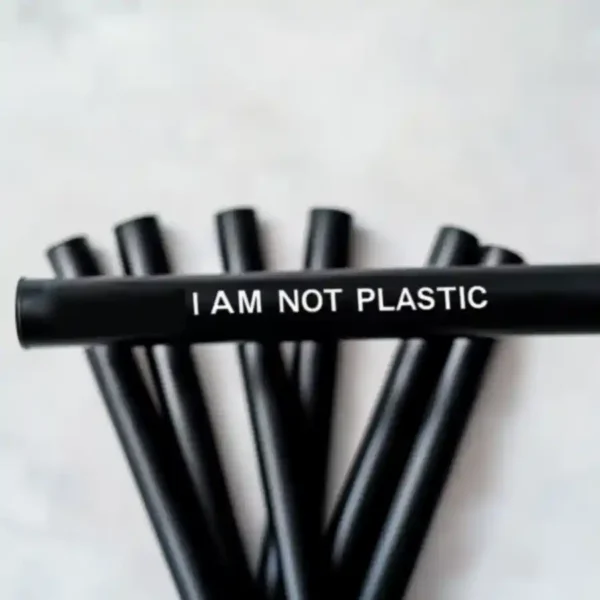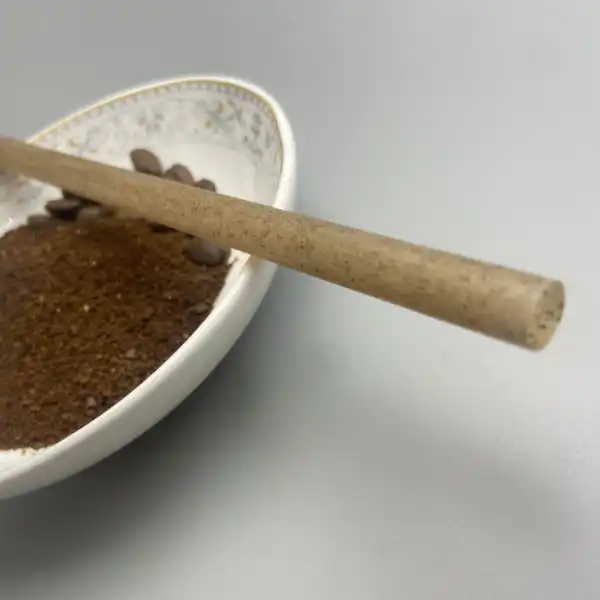
In today’s rapidly evolving marketplace, the shift towards sustainability is not just a trend; it’s a strategic imperative that can redefine competitive landscapes. As consumers become increasingly environmentally conscious and regulations tighten, the adoption of miljøvenlige produkter—especially sustainable straw alternatives—presents a unique opportunity for businesses to innovate and lead. This blog will guide you through calculating the return on investment (ROI) for eco-friendly straws, demonstrating how these green initiatives can enhance both your bottom line and brand reputation.
Why ROI Matters for Sustainability Decisions
Investing in sustainability is no longer a peripheral concern; it is central to long-term business success. Understanding and calculating ROI empowers organizations to:
- Quantify Financial Performance: Shift the perception of sustainability from a cost burden to a strategic value driver that contributes to profitability.
- Provide Strategic Justification: Craft compelling business cases for sustainable innovations that resonate with stakeholders and decision-makers.
- Drive Organizational Alignment: Develop clear metrics and frameworks to assess the impact of environmental investments on overall business goals.

Comprehensive Cost Analysis
Granular Unit Economics: We perform a detailed cost comparison between traditional plastic straws and eco-friendly alternatives. This analysis considers various factors such as material costs, sourcing, and transportation. Understanding these elements helps businesses make informed decisions.
Total Cost of Ownership: It’s crucial to assess the full lifecycle costs of straws, which includes procurement, disposal, and compliance with environmental regulations. For example, businesses may benefit from lower disposal fees with compostable straws due to their reduced impact on landfills. Learn more about sustainable materials management on the EPA’s official site.
Multidimensional Value Proposition
Direct Financial Metrics: Analyzing the financial implications is vital. We look at comparative unit pricing and bulk procurement efficiencies to see how eco-friendly options stack up against traditional choices.
- Comparative Unit Pricing: We analyze the price differences, considering potential bulk procurement discounts which can significantly affect overall costs.
- Bulk Procurement Efficiencies: By leveraging purchasing power, businesses can negotiate better rates for sustainable materials, reducing overall expenses.
- Waste Management Cost Reductions: Eco-friendly straws typically result in lower waste disposal fees, contributing to significant cost savings over time.
Intangible Brand Value: Beyond direct costs, the intangible benefits of adopting eco-friendly practices can be substantial.
- Enhanced Corporate Reputation: Positioning your brand as a sustainability leader attracts eco-conscious consumers. This strategic move can enhance your market presence and consumer trust.
- Consumer Perception Premium: Brands perceived as environmentally responsible often enjoy a price premium and increased customer loyalty, as supported by recent Consumer Reports research.
- Konkurrencedygtig differentiering: In today’s crowded market, showcasing a commitment to sustainability can foster customer preference and set your brand apart from competitors.

Market Validation Metrics
- Consumer Willingness to Pay: Studies indicate that consumers are willing to pay a premium of 15-20% for sustainable products, translating into increased revenue potential.
- Brand Perception Enhancement: Initiatives focused on sustainability correlate strongly with improved customer loyalty and positive brand sentiment, which can lead to increased market share.
Quantitative ROI Calculation Framework
To effectively calculate the ROI of eco-friendly straws, utilize the following formula:
\[ \text{Sustainable Straw ROI} = \frac{\text{Total Value Generated} – \text{Total Investment}}{\text{Total Investment}} \times 100\]
Key Performance Indicators to Monitor:
- Cost Savings: Track reductions in waste management and compliance costs.
- Revenue Incrementation: Measure sales growth resulting from enhanced brand loyalty and consumer interest.
- Brand Equity Appreciation: Assess changes in brand perception and customer engagement. Further reading at Forbes: Brand Equity.
- Regulatory Compliance Risk Mitigation: Evaluate the financial implications of avoiding penalties associated with non-compliance. See EPA Compliance Resources for more information.
Empirical Case Study: Sustainable Straw Implementation
Scenario: Urban Café Sustainability Transformation
An urban café, seeking to align with its environmentally conscious clientele, invested $5,000 in compostable straw infrastructure. Over the course of a year, the café experienced:
- Annual Cost Savings: $3,500 from reduced waste management expenses and compliance costs.
- Revenue Increase: $7,200 due to heightened customer acquisition and retention stemming from its sustainable practices.
- Calculated ROI: 102%, showcasing a robust return that underscores the financial viability of eco-friendly investments.
Strategic Implementation Recommendations
- Phased Transition Approach:
- Initiate a pilot program to test eco-friendly straws in select locations.
- Gradually scale based on performance metrics and customer feedback.
- Implement continuous monitoring to assess impact and optimize strategies.
- Comprehensive Stakeholder Engagement:
- Foster internal communication to align all team members with sustainability goals.
- Educate customers on the benefits of switching to eco-friendly straws through marketing campaigns and in-store signage.
- Commit to transparent reporting on sustainability efforts and outcomes.
- Technology and Innovation Integration:
- Explore advanced materials that enhance the performance of eco-friendly straws while reducing costs.
- Optimize your supply chain to minimize environmental impact and improve efficiency.
- Establish protocols for continuous improvement based on emerging trends and feedback.

Long-Term Strategic Implications
- Regulatory Anticipation: By proactively addressing potential environmental legislation, businesses can mitigate compliance risks and avoid penalties.
- Competitive Positioning: Companies that adopt sustainable practices early can establish themselves as market leaders, setting standards that competitors must follow.
- Investor Attractiveness: Demonstrating a commitment to sustainability can attract investors looking for forward-thinking, responsible companies that prioritize long-term viability.
Konklusion
Investing in eco-friendly straws transcends the notion of environmental stewardship; it serves as a sophisticated business strategy that yields measurable financial and reputational benefits. By embracing a holistic, data-driven approach to sustainability, companies can transform their ecological responsibilities into a compelling competitive advantage that resonates with modern consumers.
References
Global Sustainability Consumer Report, McKinsey & Company, 2022
Harvard Business Review, “The Business Case for Sustainability,” 2021
Environmental Protection Agency Sustainable Business Practices Study, 2023
Kontakt
For tailored solutions in sustainable straw implementation, reach out to our sustainability consultants at NatureBioeco. Let us help you make a lasting impact on your business and the environment.
Ofte stillede spørgsmål
What are the benefits of using eco-friendly straws?
Eco-friendly straws offer numerous benefits including reduced environmental impact, compliance with new regulations, and enhanced brand image. They are made from sustainable materials that decompose much faster than plastic, aligning with global efforts to reduce waste and pollution.
How can businesses implement eco-friendly straws effectively?
To effectively implement eco-friendly straws, businesses should start by assessing their current usage and exploring available alternatives. Partnering with credible suppliers who provide high-quality sustainable products is crucial. Additionally, educating staff and customers about the benefits of these alternatives can drive acceptance and usage.
Are there financial incentives for businesses using eco-friendly straws?
Yes, businesses using eco-friendly straws can benefit from various financial incentives such as tax breaks, subsidies, and improved customer loyalty. These incentives help offset initial costs and contribute to long-term savings by reducing waste management expenses and avoiding fees associated with non-compliant practices.
What are the latest trends in sustainable straw materials?
The latest trends in sustainable straw materials include bamboo, stainless steel, glass, and biodegradable polymers. Each material offers unique benefits and caters to different consumer needs and preferences. Innovations continue to emerge as companies seek to improve the durability and usability of these products.
How do eco-friendly straws impact consumer perception?
Adopting eco-friendly straws positively impacts consumer perception by demonstrating a company’s commitment to sustainability. This can enhance brand loyalty among environmentally conscious consumers and differentiate a brand in competitive markets. Transparent communication about such initiatives further strengthens consumer trust and engagement.
What challenges do businesses face when switching to eco-friendly straws?
Challenges include higher upfront costs, finding reliable suppliers, and resistance from customers accustomed to plastic straws. Overcoming these challenges involves strategic planning, customer education, and exploring cost-effective solutions that do not compromise product quality or customer experience.
Can eco-friendly straws really make a difference environmentally?
Yes, switching to eco-friendly straws can significantly reduce plastic waste and pollution. While alone they won’t solve all environmental issues, when combined with other sustainable practices, they contribute meaningfully to larger environmental conservation efforts and help build a more sustainable future.
What should businesses consider before adopting eco-friendly straws?
Before adopting eco-friendly straws, businesses should consider their environmental goals, customer base, and operational capabilities. It’s important to choose products that align with the company’s values and customer expectations while ensuring the switch does not disrupt service or significantly increase costs.






